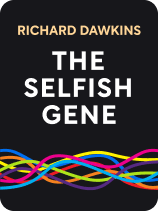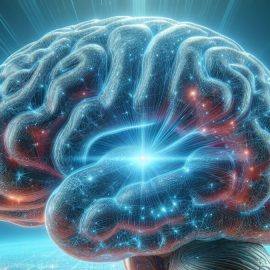

This article is an excerpt from the Shortform book guide to "The Selfish Gene" by Richard Dawkins. Shortform has the world's best summaries and analyses of books you should be reading.
Like this article? Sign up for a free trial here .
Where does consciousness come from? Is there any evidence to explain the development of consciousness?
The development of consciousness is a topic considered in The Selfish Gene by Richard Dawkins. Evolution and consciousness are arguably a natural pairing because animals are able to learn and develop over time.
Read more about the development of consciousness according to Richard Dawkins.
Animal Behavior: How To Explain the Development of Consciousness
Behavior, as defined by biologists, happens quickly. A behavior is a single action that can be observed. Therefore, plants can’t be said to have behaviors. Animals, on the other hand, undertake many behaviors every day. They have evolved to do this by developing muscles, which can move quickly and repeatedly by using chemical fuel.
One might question, if the body is really just a complex survival machine for genes, why they don’t control it directly. However, they can’t do that because the lag would be much too great. As mentioned in Chapter 3, genes code for proteins. By the time those proteins were made and incorporated into the body, whatever stimulus they were responding to would be long over.
Therefore, muscle movements are controlled and coordinated by the brain, which is like the processing unit of a computer. Like a computer, the brain interprets complex inputs and determines the appropriate responses.
The movements are then timed by neurons, or nerve cells, which control and transmit signals a bit like transistors do in electronics. Neurons are specialized cells with long, thin projections that carry signals. There is often a long central projection called an axon, which bundles with other axons to form nerves. (Shortform note: The Selfish Gene uses the older spelling “neurone,” but it refers to the same thing.)
One of the most notable things about animal behavior is that it seems purposeful—that is, the behaviors aren’t just programmed responses designed to aid survival, there seem to be desires or emotions behind them. In humans, those desires and emotions have evolved into what we call consciousness.
There’s no way of knowing whether non-human animals or man-made machines experience something similar to consciousness, but for the purposes of this book, it’s convenient to talk about animals and machines behaving as if they’re driven by some purpose. Whether they’re actually conscious like humans are is immaterial; the behaviors are what matter.
Learning and Consciousness
Like programming a computer, genes code general guidelines and patterns into the creature that carries them, and the brain then determines how best to carry out those instructions. The gene “programming” is gambling on what kind of situations the animal is likely to run into, and how to minimize risk.
For example, an animal who needs to use a watering hole might reduce risk by waiting until it’s extremely thirsty, then taking a single long drink to last for a while. That lowers the number of trips it has to take, but it increases how long it’s helpless with its head down in the water. Alternatively, maybe it would be better to snatch quick drinks many times throughout the day. The genes determine the best gamble based on many generations’ worth of natural selection.
Note that this programming doesn’t take every conceivable situation into account. For example, humans are programmed to enjoy sweet tastes because sugar is necessary for survival. However, that programming hasn’t adapted to our modern world of artificial sweeteners and excessive sugar consumption.
Because simple input-output programming isn’t always enough to cope with the real world, many animals have the ability to learn. They’re coded to recognize desirable things such as pleasant tastes and comfortable temperatures, as well as undesirable things like nausea and extreme temperatures.
These animals learn what behaviors lead to pleasant things, and will repeat those behaviors. They will also avoid behaviors that have led to unpleasant things before. In short, learning is the process of using past experiences to predict the future.
The Development of Consciousness
One excellent method of predicting the future is simulation. Just trying everything to see what works could be disastrous—imagine if an animal tried walking straight past a predator to see what would happen. Simulation allows for low-stakes trials of what could happen in certain situations.
In living creatures, simulation takes the form of imagination. By imagining what might happen in a variety of situations, humans (and possibly other advanced animals) can skip time-consuming trials and costly errors. The imagined situations will never match reality perfectly, but they’re much better than blind guesses.
This ability to imagine and predict seems to have resulted in what we recognize as consciousness, though exactly how the development of consciousness happens is one of the biggest mysteries in biology. It may have something to do with creatures coming up with simulations that recognize and involve the creatures themselves—in other words, self-awareness.
However it came about, this self-awareness could be seen as the liberation of an organism from the control of its genes. For example, genes demand that a creature have as many offspring as is feasible, but a creature with self-awareness and imagination might come up with reasons not to reproduce at all. This is especially prevalent in humans—many people choose not to have children.
All this talk of brains and the development of consciousness is background, so you understand that animal behaviors are controlled by genes only in an indirect—though still very real—way. As brains became more advanced, developing imagination and what we might call the development of consciousness, they took more and more control away from the genes.
Taking this process to the extreme, it’s possible that at some point in the distant future, the only genetic command hardwired into a species will be survival. All of the behaviors to accomplish it will be purely up to the brain.

———End of Preview———
Like what you just read? Read the rest of the world's best book summary and analysis of Richard Dawkins's "The Selfish Gene" at Shortform .
Here's what you'll find in our full The Selfish Gene summary :
- Why organisms don't matter, only genes do
- How all life forms begin with a replicating molecule
- How species need to balance aggression and pacifism to survive






